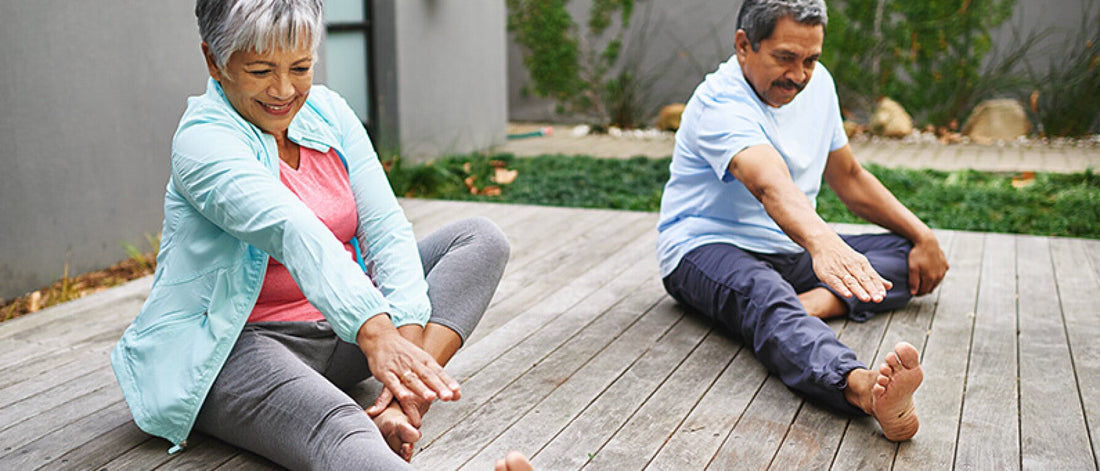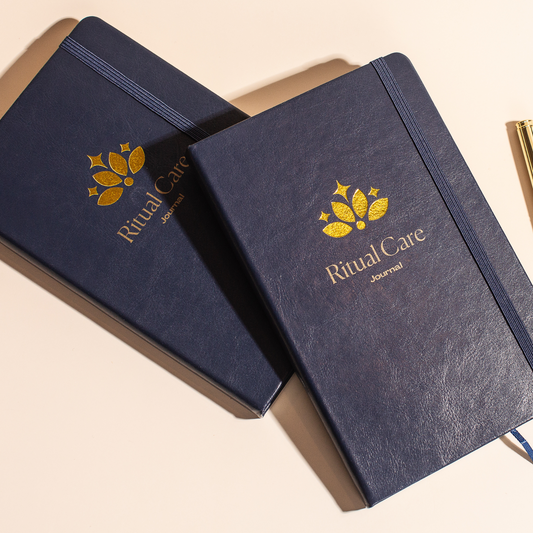What is it about hunkering in front of a computer all day that’s so exhausting? It’s a wonder that a sedentary activity can cause your body so much fatigue but sitting up straight for hours at a stretch is undeniably backbreaking.
As a result, technology-related posture aches and pains like rounded shoulders, hunched backs, tight hip flexors, and the dreaded “text neck” are causing more complaints than ever. But the battle against screens and their negative effects on your body doesn’t have to be futile.
Of course, many people try the typical posture advice that instructs you to assume a static, braced position, find it exhausting and give up. However, this uptight approach is unrealistic.
Your body is in perpetual motion, always changing and adapting to the needs of your current activity. When you reach for a pencil or a glass of water, every single cell in your body shifts to support you. Every cell!
It’s much more productive and sustainable to work with your body’s inherent intelligence and allow it to find its own optimal posture—a place where it can relax and find ease rather than stiffen and brace.
Here are four tips to embodying mindfulness for better posture at work and in life.
While there is no one “right” way to sit, hunched and crunched posture constricts your breathing, thereby diminishing your energy and ability to focus. However, reversing this effect is a piece of cake when you bring mindfulness into the equation.
Rather than crumpling into your chair, bring the same mindfulness you’d have in a yoga or meditation practice to work. Feel the pressure of your feet on the floor and notice how contact with the ground elongates your spine. Relax your jaw and feel your shoulders drop while your breath deepens.
This practice isn’t about “doing” posture—engaging your core, pulling shoulders back, or any other such rigid bracing. Instead, it’s a playful practice of using mindful body awareness to find ease so that you can sit comfortably without strain.
Instead of imposing control over your breath, try bringing your attention to it without attempting to alter your breathing in any way. This practice of observing your breath will nudge your body toward relaxation. As you pay attention to the rise and fall of your chest, imagine that you are being breathed, as though it’s happening through a process outside yourself.
You may notice that your shoulders drop, your heart rate slows, and you feel calmer. Working with the breath in this way is like hitting a reset button on your body, dissolving all of the stored tension you’ve built up during your day.
You may come by this lack of present-moment awareness honestly though because, culturally, most of us don’t have much of a framework for embodied mindfulness. The world emphasizes brain smarts above the wisdom of the body. But the body has its own brand of intelligence. In order to bring that to the forefront and reunite your body and brain, you need to give sensations a voice.
You don’t have to do yoga to benefit from this practice. Sensory awareness is available to you all day, every day—and it’s free. Simply put your attention on your body when you move, and then verbalize what you feel.
Pay particular attention to sensations that feel good in your body. You may be conditioned to seek and destroy pain, but the opposite of pain is not numbness. Focusing on pleasurable sensations calms your nervous system and relaxes your muscles without you even having to do anything.
Sometimes tension isn’t linear—it builds up in your muscles for many reasons, including past injuries, surgeries, emotional scars, traumas, and chronic stress. Following your body’s internal cues can be more productive than working through a textbook-stretching routine.
Once you’ve started to identify pleasurable sensations, you can move in ways that feel nourishing. This is very similar to intuitive eating. Like food, movement is a nutrient. Your body needs it, and so does your brain.
Mindful movement starts with paying attention to where and how your body would like to stretch, and for how long. Soon you’ll start to notice that you don’t need timers and reminders to adjust your body position or take breaks from work. Your own cells will send you the message, and your brain will be ready to receive it.
Of course, these four tips—like all mindfulness practices—aren’t a one-and-done deal. Fortunately, you’ll find that the more you hone your embodied mindfulness skills, the easier it will be to maintain a relaxed, comfortable posture every day.
As a result, technology-related posture aches and pains like rounded shoulders, hunched backs, tight hip flexors, and the dreaded “text neck” are causing more complaints than ever. But the battle against screens and their negative effects on your body doesn’t have to be futile.
Of course, many people try the typical posture advice that instructs you to assume a static, braced position, find it exhausting and give up. However, this uptight approach is unrealistic.
Your body is in perpetual motion, always changing and adapting to the needs of your current activity. When you reach for a pencil or a glass of water, every single cell in your body shifts to support you. Every cell!
It’s much more productive and sustainable to work with your body’s inherent intelligence and allow it to find its own optimal posture—a place where it can relax and find ease rather than stiffen and brace.
Here are four tips to embodying mindfulness for better posture at work and in life.
1. Pay Attention to How You’re Doing What You’re Doing
There’s a lot of talk in the news these days about the toxicity of technology. In particular, many reports attack the prevalence of sitting and staring at screens. Interestingly, the problem with modern work lives isn’t so much that we’re sitting, but rather how we’re sitting.While there is no one “right” way to sit, hunched and crunched posture constricts your breathing, thereby diminishing your energy and ability to focus. However, reversing this effect is a piece of cake when you bring mindfulness into the equation.
Rather than crumpling into your chair, bring the same mindfulness you’d have in a yoga or meditation practice to work. Feel the pressure of your feet on the floor and notice how contact with the ground elongates your spine. Relax your jaw and feel your shoulders drop while your breath deepens.
This practice isn’t about “doing” posture—engaging your core, pulling shoulders back, or any other such rigid bracing. Instead, it’s a playful practice of using mindful body awareness to find ease so that you can sit comfortably without strain.
2. Let Yourself Be “Breathed”
Does taking a deep breath to you mean heaving air into your lungs, holding it for a few counts, and then releasing it in a thin, tight stream? If so, this type of breathing only makes your muscles tense up more.Instead of imposing control over your breath, try bringing your attention to it without attempting to alter your breathing in any way. This practice of observing your breath will nudge your body toward relaxation. As you pay attention to the rise and fall of your chest, imagine that you are being breathed, as though it’s happening through a process outside yourself.
You may notice that your shoulders drop, your heart rate slows, and you feel calmer. Working with the breath in this way is like hitting a reset button on your body, dissolving all of the stored tension you’ve built up during your day.
3. Feel Every Movement
Corrective stretches and yoga classes are a lovely way to untangle your knotted muscles. However, don’t make the mistake of just going through the motions. If you follow your instructor and just complete the poses or stretches, you don’t experience being in your body through the movement.You may come by this lack of present-moment awareness honestly though because, culturally, most of us don’t have much of a framework for embodied mindfulness. The world emphasizes brain smarts above the wisdom of the body. But the body has its own brand of intelligence. In order to bring that to the forefront and reunite your body and brain, you need to give sensations a voice.
You don’t have to do yoga to benefit from this practice. Sensory awareness is available to you all day, every day—and it’s free. Simply put your attention on your body when you move, and then verbalize what you feel.
Pay particular attention to sensations that feel good in your body. You may be conditioned to seek and destroy pain, but the opposite of pain is not numbness. Focusing on pleasurable sensations calms your nervous system and relaxes your muscles without you even having to do anything.
4. Find What Feels Good and Follow That
Fitness culture tells you how you should move, bend, twist, and stretch, but have you ever paused to ask your body how it actually wants to move?Sometimes tension isn’t linear—it builds up in your muscles for many reasons, including past injuries, surgeries, emotional scars, traumas, and chronic stress. Following your body’s internal cues can be more productive than working through a textbook-stretching routine.
Once you’ve started to identify pleasurable sensations, you can move in ways that feel nourishing. This is very similar to intuitive eating. Like food, movement is a nutrient. Your body needs it, and so does your brain.
Mindful movement starts with paying attention to where and how your body would like to stretch, and for how long. Soon you’ll start to notice that you don’t need timers and reminders to adjust your body position or take breaks from work. Your own cells will send you the message, and your brain will be ready to receive it.
Of course, these four tips—like all mindfulness practices—aren’t a one-and-done deal. Fortunately, you’ll find that the more you hone your embodied mindfulness skills, the easier it will be to maintain a relaxed, comfortable posture every day.






















